Dennis Ulmer
On Uncertainty In Natural Language Processing
Oct 04, 2024Abstract:The last decade in deep learning has brought on increasingly capable systems that are deployed on a wide variety of applications. In natural language processing, the field has been transformed by a number of breakthroughs including large language models, which are used in increasingly many user-facing applications. In order to reap the benefits of this technology and reduce potential harms, it is important to quantify the reliability of model predictions and the uncertainties that shroud their development. This thesis studies how uncertainty in natural language processing can be characterized from a linguistic, statistical and neural perspective, and how it can be reduced and quantified through the design of the experimental pipeline. We further explore uncertainty quantification in modeling by theoretically and empirically investigating the effect of inductive model biases in text classification tasks. The corresponding experiments include data for three different languages (Danish, English and Finnish) and tasks as well as a large set of different uncertainty quantification approaches. Additionally, we propose a method for calibrated sampling in natural language generation based on non-exchangeable conformal prediction, which provides tighter token sets with better coverage of the actual continuation. Lastly, we develop an approach to quantify confidence in large black-box language models using auxiliary predictors, where the confidence is predicted from the input to and generated output text of the target model alone.
Calibrating Large Language Models Using Their Generations Only
Mar 09, 2024Abstract:As large language models (LLMs) are increasingly deployed in user-facing applications, building trust and maintaining safety by accurately quantifying a model's confidence in its prediction becomes even more important. However, finding effective ways to calibrate LLMs - especially when the only interface to the models is their generated text - remains a challenge. We propose APRICOT (auxiliary prediction of confidence targets): A method to set confidence targets and train an additional model that predicts an LLM's confidence based on its textual input and output alone. This approach has several advantages: It is conceptually simple, does not require access to the target model beyond its output, does not interfere with the language generation, and has a multitude of potential usages, for instance by verbalizing the predicted confidence or adjusting the given answer based on the confidence. We show how our approach performs competitively in terms of calibration error for white-box and black-box LLMs on closed-book question-answering to detect incorrect LLM answers.
TRAP: Targeted Random Adversarial Prompt Honeypot for Black-Box Identification
Feb 20, 2024



Abstract:Large Language Model (LLM) services and models often come with legal rules on who can use them and how they must use them. Assessing the compliance of the released LLMs is crucial, as these rules protect the interests of the LLM contributor and prevent misuse. In this context, we describe the novel problem of Black-box Identity Verification (BBIV). The goal is to determine whether a third-party application uses a certain LLM through its chat function. We propose a method called Targeted Random Adversarial Prompt (TRAP) that identifies the specific LLM in use. We repurpose adversarial suffixes, originally proposed for jailbreaking, to get a pre-defined answer from the target LLM, while other models give random answers. TRAP detects the target LLMs with over 95% true positive rate at under 0.2% false positive rate even after a single interaction. TRAP remains effective even if the LLM has minor changes that do not significantly alter the original function.
Non-Exchangeable Conformal Language Generation with Nearest Neighbors
Feb 01, 2024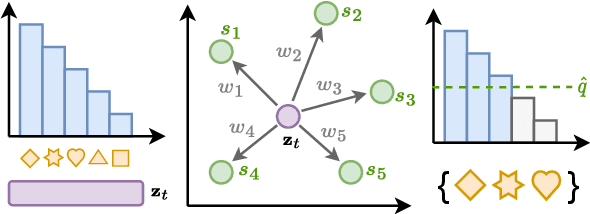
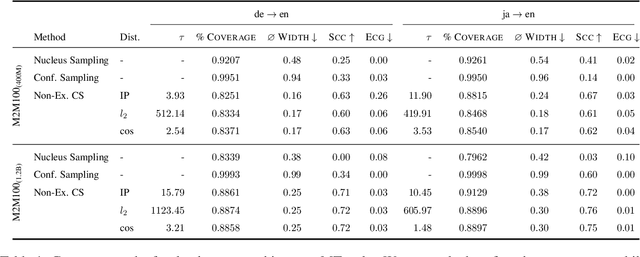
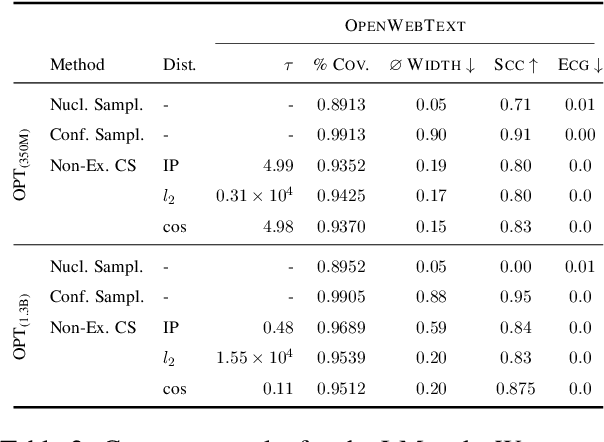
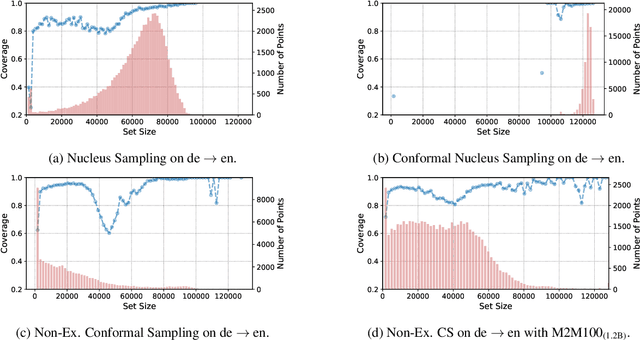
Abstract:Quantifying uncertainty in automatically generated text is important for letting humans check potential hallucinations and making systems more reliable. Conformal prediction is an attractive framework to provide predictions imbued with statistical guarantees, however, its application to text generation is challenging since any i.i.d. assumptions are not realistic. In this paper, we bridge this gap by leveraging recent results on non-exchangeable conformal prediction, which still ensures bounds on coverage. The result, non-exchangeable conformal nucleus sampling, is a novel extension of the conformal prediction framework to generation based on nearest neighbors. Our method can be used post-hoc for an arbitrary model without extra training and supplies token-level, calibrated prediction sets equipped with statistical guarantees. Experiments in machine translation and language modeling show encouraging results in generation quality. By also producing tighter prediction sets with good coverage, we thus give a more theoretically principled way to perform sampling with conformal guarantees.
Bootstrapping LLM-based Task-Oriented Dialogue Agents via Self-Talk
Jan 10, 2024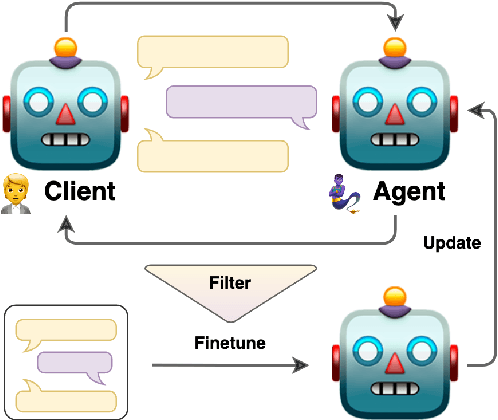

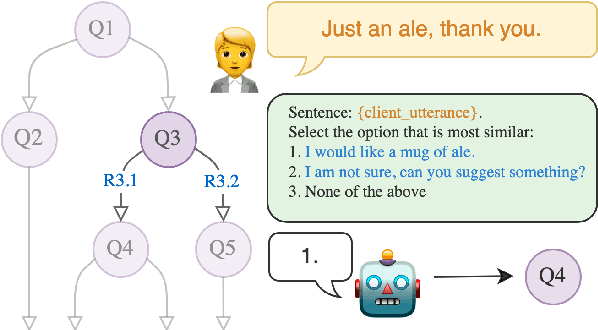

Abstract:Large language models (LLMs) are powerful dialogue agents, but specializing them towards fulfilling a specific function can be challenging. Instructing tuning, i.e. tuning models on instruction and sample responses generated by humans (Ouyang et al., 2022), has proven as an effective method to do so, yet requires a number of data samples that a) might not be available or b) costly to generate. Furthermore, this cost increases when the goal is to make the LLM follow a specific workflow within a dialogue instead of single instructions. Inspired by the self-play technique in reinforcement learning and the use of LLMs to simulate human agents, we propose a more effective method for data collection through LLMs engaging in a conversation in various roles. This approach generates a training data via "self-talk" of LLMs that can be refined and utilized for supervised fine-tuning. We introduce an automated way to measure the (partial) success of a dialogue. This metric is used to filter the generated conversational data that is fed back in LLM for training. Based on our automated and human evaluations of conversation quality, we demonstrate that such self-talk data improves results. In addition, we examine the various characteristics that showcase the quality of generated dialogues and how they can be connected to their potential utility as training data.
Non-Exchangeable Conformal Risk Control
Oct 02, 2023Abstract:Split conformal prediction has recently sparked great interest due to its ability to provide formally guaranteed uncertainty sets or intervals for predictions made by black-box neural models, ensuring a predefined probability of containing the actual ground truth. While the original formulation assumes data exchangeability, some extensions handle non-exchangeable data, which is often the case in many real-world scenarios. In parallel, some progress has been made in conformal methods that provide statistical guarantees for a broader range of objectives, such as bounding the best F1-score or minimizing the false negative rate in expectation. In this paper, we leverage and extend these two lines of work by proposing non-exchangeable conformal risk control, which allows controlling the expected value of any monotone loss function when the data is not exchangeable. Our framework is flexible, makes very few assumptions, and allows weighting the data based on its statistical similarity with the test examples; a careful choice of weights may result on tighter bounds, making our framework useful in the presence of change points, time series, or other forms of distribution drift. Experiments with both synthetic and real world data show the usefulness of our method.
Uncertainty in Natural Language Generation: From Theory to Applications
Jul 28, 2023

Abstract:Recent advances of powerful Language Models have allowed Natural Language Generation (NLG) to emerge as an important technology that can not only perform traditional tasks like summarisation or translation, but also serve as a natural language interface to a variety of applications. As such, it is crucial that NLG systems are trustworthy and reliable, for example by indicating when they are likely to be wrong; and supporting multiple views, backgrounds and writing styles -- reflecting diverse human sub-populations. In this paper, we argue that a principled treatment of uncertainty can assist in creating systems and evaluation protocols better aligned with these goals. We first present the fundamental theory, frameworks and vocabulary required to represent uncertainty. We then characterise the main sources of uncertainty in NLG from a linguistic perspective, and propose a two-dimensional taxonomy that is more informative and faithful than the popular aleatoric/epistemic dichotomy. Finally, we move from theory to applications and highlight exciting research directions that exploit uncertainty to power decoding, controllable generation, self-assessment, selective answering, active learning and more.
State-of-the-art generalisation research in NLP: a taxonomy and review
Oct 10, 2022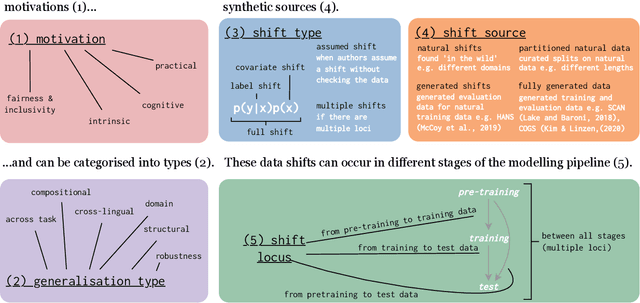
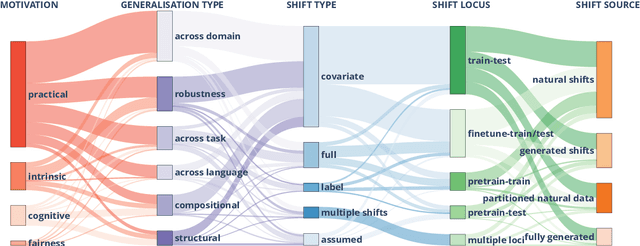
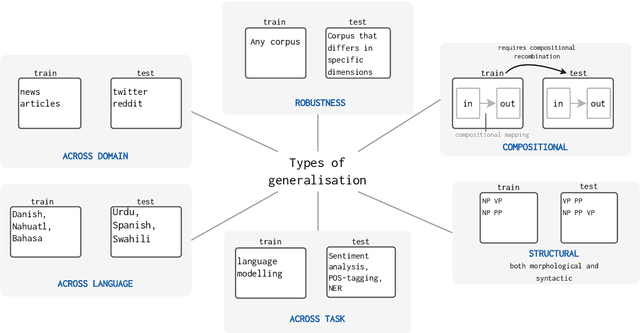

Abstract:The ability to generalise well is one of the primary desiderata of natural language processing (NLP). Yet, what `good generalisation' entails and how it should be evaluated is not well understood, nor are there any common standards to evaluate it. In this paper, we aim to lay the ground-work to improve both of these issues. We present a taxonomy for characterising and understanding generalisation research in NLP, we use that taxonomy to present a comprehensive map of published generalisation studies, and we make recommendations for which areas might deserve attention in the future. Our taxonomy is based on an extensive literature review of generalisation research, and contains five axes along which studies can differ: their main motivation, the type of generalisation they aim to solve, the type of data shift they consider, the source by which this data shift is obtained, and the locus of the shift within the modelling pipeline. We use our taxonomy to classify over 400 previous papers that test generalisation, for a total of more than 600 individual experiments. Considering the results of this review, we present an in-depth analysis of the current state of generalisation research in NLP, and make recommendations for the future. Along with this paper, we release a webpage where the results of our review can be dynamically explored, and which we intend to up-date as new NLP generalisation studies are published. With this work, we aim to make steps towards making state-of-the-art generalisation testing the new status quo in NLP.
deep-significance - Easy and Meaningful Statistical Significance Testing in the Age of Neural Networks
Apr 14, 2022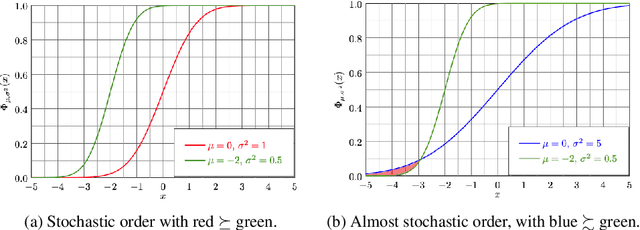
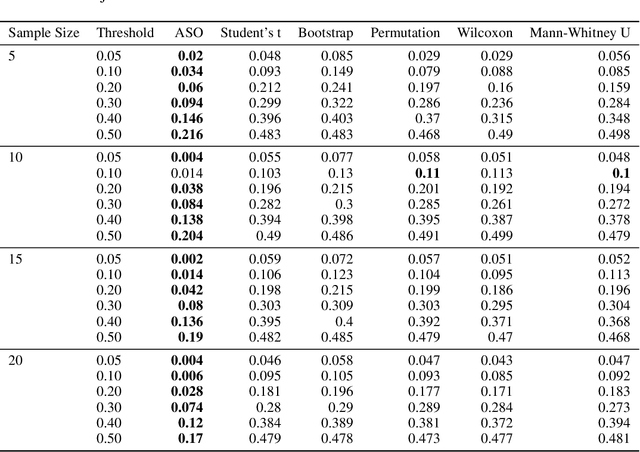
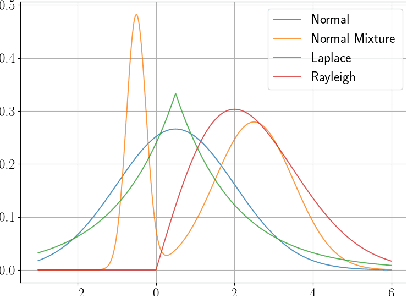
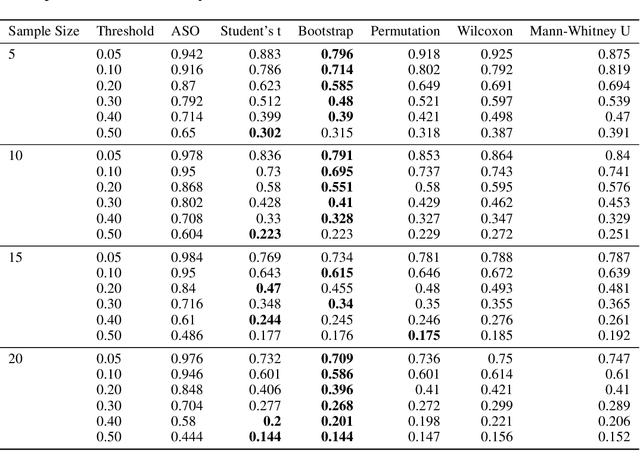
Abstract:A lot of Machine Learning (ML) and Deep Learning (DL) research is of an empirical nature. Nevertheless, statistical significance testing (SST) is still not widely used. This endangers true progress, as seeming improvements over a baseline might be statistical flukes, leading follow-up research astray while wasting human and computational resources. Here, we provide an easy-to-use package containing different significance tests and utility functions specifically tailored towards research needs and usability.
Experimental Standards for Deep Learning Research: A Natural Language Processing Perspective
Apr 13, 2022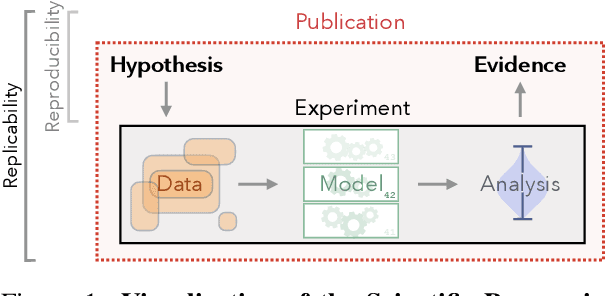
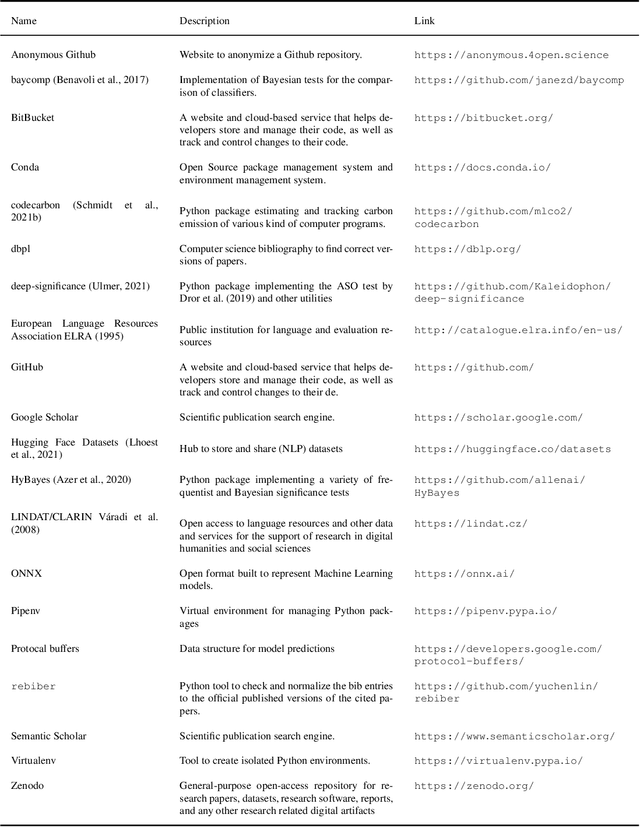

Abstract:The field of Deep Learning (DL) has undergone explosive growth during the last decade, with a substantial impact on Natural Language Processing (NLP) as well. Yet, as with other fields employing DL techniques, there has been a lack of common experimental standards compared to more established disciplines. Starting from fundamental scientific principles, we distill ongoing discussions on experimental standards in DL into a single, widely-applicable methodology. Following these best practices is crucial to strengthening experimental evidence, improve reproducibility and enable scientific progress. These standards are further collected in a public repository to help them transparently adapt to future needs.
 Add to Chrome
Add to Chrome Add to Firefox
Add to Firefox Add to Edge
Add to Edge